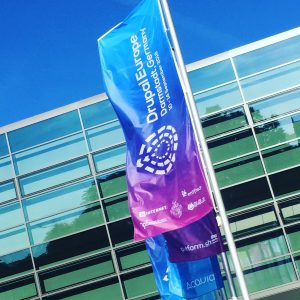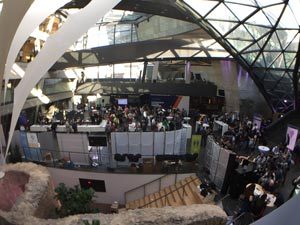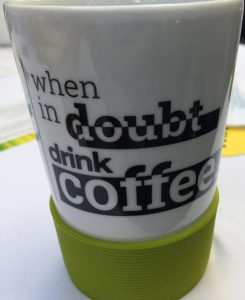In 2008 I was first introduced to this thing called Drupal. Ten years later and, via a few changes in role, I eventually found myself at my first Drupal conference; Drupal Europe, in the German city of Darmstadt, near Frankfurt. Home of Frankenstein’s Castle and fabled to be the inspiration of a certain book.
As with a lot of conferences these days, Drupal Europe is comprised of numerous sessions running simultaneously in different themed tracks; from business to education, and virtual reality.
The first session I attended was entitled Lessons learned from applying Drupal in Higher Education Projects. https://www.drupaleurope.org/session/lessons-learned-applying-drupal-higher-education-projects. The talk showed us how students were using Drupal to build websites for external companies as part of their course at the University of Hildesheim. This was an interesting concept as it gave the students real-world experience, a commodity which is greatly desired by potential employers.
One trend that seemed to be a theme of a lot of the talks was to the move towards decoupled systems. This is where Drupal is used as a headless backend content management system only and the frontend is deployed using a different framework, such as React from Facebook. There is also partial decoupling where some elements may use a different framework–like a booking system–but the rest of the site continues to use Drupal for the front- and backend.
T he totally decoupled approach allows you the flexibility to use one source of truth for a myriad of platforms or apps etc. On the flip side, all the frontend functionality that you get from Drupal itself or contributed modules needs to be created again from scratch on the respective frontend platform.
he totally decoupled approach allows you the flexibility to use one source of truth for a myriad of platforms or apps etc. On the flip side, all the frontend functionality that you get from Drupal itself or contributed modules needs to be created again from scratch on the respective frontend platform.
A highlight for me was the keynote given by Dries Buytaert, the founder of Drupal. It’s nice to hear someone talk so passionately about something and the energy and buzz in the lecture theatre were great. You can watch it here: https://www.youtube.com/watch?v=iXB0sNreSlM.
The networking aspect of these events shouldn’t be overlooked either. Being able to bounce ideas and discuss shared frustrations with fellow Drupalers over a Weißwurst (a traditional Bavarian white sausage) and Bier (hopefully you can work out what that is!), is definitely one of the most useful aspects.
As a result of these sessions, I have a list of must-have modules for most Drupal sites depending on its purpose.

Coffee: If you’ve used Drupal or any other CMS before you will know that sometimes finding something in an admin menu can be a frustrating experience.
“I know I’ve seen x function here somewhere”
Coffee aims to take some of this pain away by allowing you to search and switch between admin pages real fast. Think spotlight search on an Apple Mac. Pressing Alt + D pops up a modal window and you just start typing.
Paragraphs: Allows site builders and content creators to add content to a website in a fast consistent way using pre-defined paragraph types. These types could be anything from a block of text, an image to a complex slideshow.
Although I haven’t had the opportunity to use Paragraphs on a live site I feel it’s the way forward to give content editors in Drupal the experience they expect.
In summary, I found Drupal Europe to be a useful experience not only in learning about new trends and ways of doing things but also affirming that what we are doing with our websites is correct.
Appendix
Below is a list of other notable modules every site should consider.
- Environment indicator
- Backup and migrate
- Stage file proxy
- GDPR
- Devel
- Devel – emails config in devel
- Devel -web profiler
- Features
- Config read only
- Read only mode
- Admin menu/admin toolbar
- Module filter / permission filter
- Rules
- Bricks
- Field group
- Field collection
- Ckeditor
- Webform
- Entity translation
- Tmgmt
- Workspace


0 Responses
Stay in touch with the conversation, subscribe to the RSS feed for comments on this post.